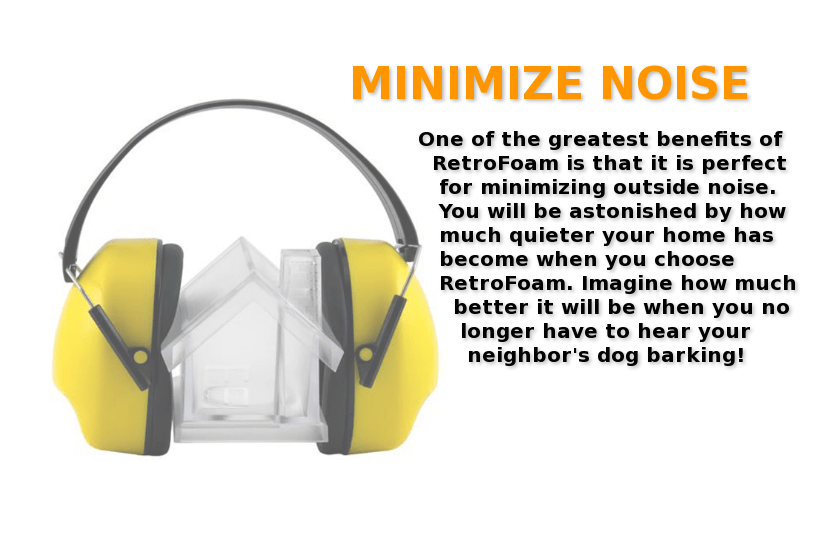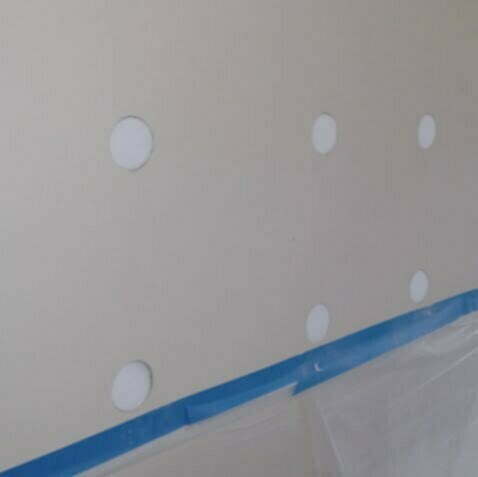Injection foam insulation has become an increasingly popular choice for homeowners and builders looking to improve energy efficiency, comfort, and noise control in residential and commercial spaces. Unlike more traditional insulation materials like fiberglass batts or cellulose, injection foam can provide superior air sealing, insulation, and sound dampening in one step.
When it comes to managing noise, injection foam acoustic insulation offers key advantages over other insulation options. This injected foam can reduce sound transmission through walls, ceilings, and floors by filling in gaps and crevices while damping vibration. For homeowners struggling with exterior noise or interior sound transfer issues, injection foam can be an ideal solution.
What is Injection Foam Acoustic Insulation?
Injection foam is a specially designed type of insulation that is administered into existing walls. The process involves inserting injection foam into spaces in existing structures or new construction.
Injection foam can be installed via holes drilled into the area needing insulation. Holes are spaced strategically to ensure full coverage.
Benefits of Injection Foam Insulation
Several key benefits make injection foam well-suited for acoustic insulation applications:
Superior Noise Reduction
The structure and density of cured injection foam provide excellent sounddeadening. Foam injected into walls can reduce sound transmission by 80% compared to empty wall cavities. The airtight seal also eliminates noise transfer through cracks and gaps.
Customizable Application
Injection foam can be installed in almost any enclosed cavity space, no matter how irregularly shaped. This allows acoustic treatment even in complex, hard-to-reach areas. The foam fills and then cures to cover the entire space.
Air Sealing
By sealing cracks, gaps, and leaks, injection foam insulation can significantly reduce noise infiltration from outside the home. The foam insulation also fills gaps that air ducts might leave, preventing air and heat from escaping and maximizing energy efficiency.
Vibration Damping
Injection foam bonds tightly to framing and sheathing. This friction damps vibration that can generate or amplify noise. The foam’s structure also has inherent vibration-damping properties.
Lightweight Installation
This foam adds minimal extra weight to walls and ceilings, which simplifies installation in existing homes.
Application Areas of Injection Foam Insulation
Some of the most common applications include:
- Interior and party walls: Reduces noise transmission between rooms
- Home theaters: Provides sound isolation for an optimal viewing experience
- Bedroom walls: Diminishes noise from other living spaces
- Flooring assemblies: Decreases impact noise and footfall sound transmission
- Ceilings below noisy spaces (i.e. media rooms): Minimizes overhead sound transfer
- Bathrooms and laundry rooms: Dampens plumbing noises like water hammer
- Home offices: Blocks distracting household noises
This versatile insulation can treat a variety of noise issues throughout the home. Professional installers can advise on the best application areas based on your unique needs.
The Science Behind Injection Foam Acoustic Insulation
Understanding the physics of how injection foam blocks and absorbs sound helps explain why it excels as an acoustic insulation product.
How Does Injection Foam Insulation Work?
Injection foam reduces sound transmission in two key ways:
- Sound Blocking: The foam’s dense, plastic structure is efficient at blocking sound waves and vibration. This prevents noises from passing directly through walls and ceilings. The airtight seal also eliminates gaps that would allow sound transmission.
- Sound Absorption: Sound energy gets converted to heat as sound passes through the foam. The foam’s high density and cellular structure maximize this sound absorption effect through friction and sound scattering.
Together, these mechanisms allow injection foam to limit airborne and structure-borne sound for quieter indoor spaces.
Comparing Injection Foam Insulation to Other Materials
Injection foam has distinct performance benefits over common insulation materials in terms of noise control:
- Fiberglass batts: Provide minimal sound blocking and allow airflow gaps. Not effective for soundproofing.
- Mineral wool: Denser than fiberglass for better noise reduction but still has performance limits.
- Cellulose: Loose-fill cellulose lacks air-sealing ability and has little acoustic benefit.
- Spray foam: Higher density than injection foam may improve sound absorption but is costlier.
For noise control, injection foam insulation outperforms these other options. Professional acoustic foams can provide noise reduction similar to 10+ inches of traditional insulation.
Key Performance Metrics for Acoustic Insulation
Two main specifications used to rate acoustic foam are:
- Noise Reduction Coefficient (NRC): Measures sound absorbed when passing through a material. An NRC of 1 blocks all sound while 0 blocks no sound. Quality acoustic foams typically have an NRC of .6 or higher.
- Sound Transmission Class (STC): Evaluates the material’s effectiveness at preventing sound transfer from one space to another. Typical interior walls have an STC of 33-39. Injection foam insulation can achieve STC scores of 50 or above.
These metrics help consumers compare products and select insulation that meets their noise control needs.
Installing Injection Foam Insulation
Getting the benefits of injection foam requires proper installation. Here’s what to know:
The Importance of Professional Installation
While injecting foam insulation may seem like a DIY-friendly task, homeowners should strongly consider hiring professional installers for this project to ensure proper application and full coverage. With the right tools and comprehensive training, insulation professionals know how to strategically inject foam to seal cracks, fill cavities, and prevent issues like leakage down the road.
Investing in a certified pro like Cincinnati RetroFoam to install your injection foam insulation the first time provides long-term peace of mind and ensures you realize the full benefits of this superior insulation product.
Costs and Considerations for Injection Foam Acoustic Insulation
Understanding the costs and long-term factors of injection foam can help consumers make informed decisions.
Estimating the Cost of Injection Foam Insulation
As a premium insulation material, injection foam carries a higher upfront cost than traditional options like fiberglass. However, it also provides superior insulation and acoustic performance per inch.
Total costs depend on factors like:
- House/room size
- Accessibility of spaces
Understanding the Long-Term Benefits and Savings
The higher initial investment in injection foam pays off over time through:
- Lower energy bills from improved insulation
- Enhanced property value for greater resale
- Better sleep, focus, and quality of life through reduced noise
Have a qualified professional assess your home’s unique needs and install the foam properly. With proper installation and application, injection foam can provide homeowners with lasting rewards for years to come. Consult with our insulation experts to determine if this solution is right for your space and noise control goals.
Insulate Your Home with Cincinnati RetroFoam
Since 2015, Cincinnati RetroFoam has provided superior insulation services that aren’t offered elsewhere. If you’re looking to insulate walls with injection foam or you want to insulate another part of your home, we are your trusted guide. In addition to injection foam for acoustics, we offer blown-in and spray foam insulation. We work on existing homes, new construction, pole barns, and commercial properties. Let us help you insulate your space to provide years of lasting comfort.
Contact us today for your free quote.
Frequently Asked Questions
Does injection foam insulation reduce noise?
Yes, injection foam insulation is very effective at reducing noise. The dense cell structure of cured foam blocks sound transmission and absorbs noise through vibration damping and friction, allowing it to minimize airborne and structure-borne sounds.
What is the best insulation for sound reduction?
The best insulation for sound reduction is injection foam insulation, as its high density and airtight sealing allow it to block and absorb sound better than traditional materials like fiberglass or cellulose.
Does noise-canceling insulation work?
Yes, noise-canceling insulation like injection foam works very well to reduce unwanted noise in homes and other spaces. By blocking air gaps and absorbing vibrational sound energy, the dense cell structure of acoustic injection foam can significantly decrease noise transmission through walls, floors, and ceilings.


